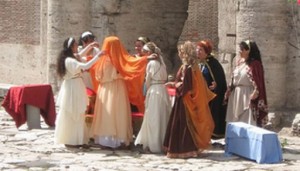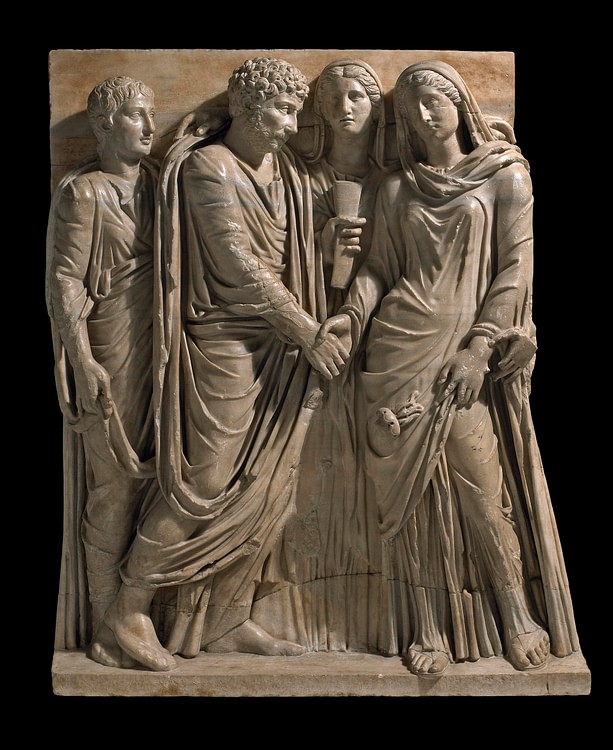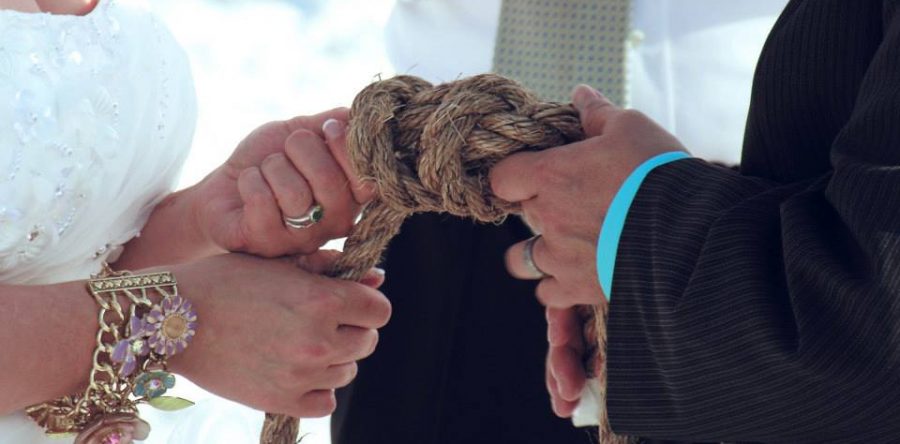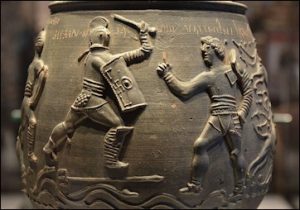
Bridal Ceremonies in Ancient Rome
Introduction Bridal ceremonies in ancient Rome held significant cultural and societal importance, reflecting the values, traditions, and religious beliefs of the Roman civilization. These ceremonies marked the union of two individuals in matrimony and were characterized by elaborate rituals, customs, and celebrations. The matrimonial journey in ancient Rome was not only a personal event but also a reflection of the broader Roman social fabric, where familial ties and social status were closely intertwined. This article delves into the intricate details of bridal ceremonies in ancient Rome, shedding light on their symbolism, rituals, and broader cultural implications.
Betrothal: Paving the Path to Matrimony The journey of a Roman bridal ceremony began with the betrothal, an essential contractual agreement between families rather than the individuals themselves. Betrothals were typically arranged by the fathers of the bride and groom, who negotiated terms such as dowries, property transfers, and social status. This negotiation aimed to strengthen family alliances and ensure the continuation of noble bloodlines.
Ritual of the Intentio The ceremony commenced with the intentio, where the groom publicly expressed his intention to marry the bride. This formal declaration took place in the presence of witnesses and a priest, who would ensure the legality and sanctity of the union. The symbolism of this act rested in the idea of public commitment and responsibility, binding the groom to his future spouse.
The Role of the Bride The bride’s consent was of secondary importance in these arrangements, emphasizing the patriarchal nature of ancient Roman society. The role of the bride was to conform to the expectations of her family and society, upholding traditional values and virtues. Her attire played a crucial role in conveying her transition from a maiden to a wife. She wore a white tunica, a long flowing robe, symbolizing her purity and chastity.
The Flammeum: Veiling the Bride A notable element of the bridal attire was the flammeum, a bright orange veil that covered the bride’s head. This veil was believed to ward off evil spirits and protect the bride from malevolent forces. The flammeum, combined with the white tunica, represented a visual dichotomy of innocence and fertility, encapsulating the bride’s transition from a sheltered maiden to a fertile wife.
The Nuptial Procession The nuptial procession was a grand spectacle that marked the bride’s transition from her family home to that of her husband-to-be. Accompanied by a group of bridesmaids and attendants, the bride walked through the streets, carrying symbolic offerings such as fruits, flowers, and small statues of gods. This procession served as a public display of the family’s wealth and social status and showcased the bride’s adherence to traditional customs.
The Entrance Ritual The culmination of the nuptial procession occurred at the groom’s house, where a symbolic threshold known as the limen was crossed. The limen held immense significance, representing the bride’s transition from her maiden life to her new role as a wife. To ensure a prosperous and harmonious marriage, the bride was carried over the limen, preventing her from stumbling – a sign of bad luck. This act underlined the groom’s responsibility to protect his bride and ensure her well-being.

The Lighting of the Torch As the bride entered her new home, a torch was lit using the flame from her flammeum. This torch was considered a symbol of Hymen, the Roman god of marriage, and its light signified the eternal flame of love and commitment. The torch was carried in a circular motion around the couple, symbolizing the cyclical nature of life, love, and marriage.
The Contractio: Sealing the Marriage The contractio was a pivotal moment in the Roman bridal ceremony, where the groom would gift his bride with a gold ring. This ring, often adorned with intricate designs or gemstones, served as a symbol of ownership and fidelity. The placing of the ring on the bride’s finger marked the official conclusion of the marriage contract, and from that point on, the couple was considered legally married.
The Wedding Feast and Celebrations After the contractio, the couple and their guests would gather for a lavish wedding feast. This celebratory meal marked the beginning of the marriage festivities, with friends and family joining in the revelry. Ancient Roman banquets were known for their opulence, and the wedding feast was no exception. Lavish dishes, fine wines, and musical entertainment created an atmosphere of joy and festivity, reflecting the importance of communal celebration in Roman culture.
Conclusion: Echoes of Ancient Rituals Bridal ceremonies in ancient Rome were intricate events deeply rooted in tradition, symbolism, and social norms. These ceremonies not only celebrated the union of two individuals but also showcased the broader dynamics of Roman society, where familial ties, societal roles, and religious beliefs intertwined. The rituals, from the betrothal to the wedding feast, demonstrated the multifaceted nature of Roman marital traditions, reflecting a complex blend of practical considerations and symbolic meanings. While the specific customs and practices of ancient Roman bridal ceremonies may differ greatly from modern weddings, their echoes can still be heard in contemporary matrimonial celebrations, where the merging of families, the exchange of vows, and the communal rejoicing continue to be cherished aspects of uniting two lives in love and commitment.







